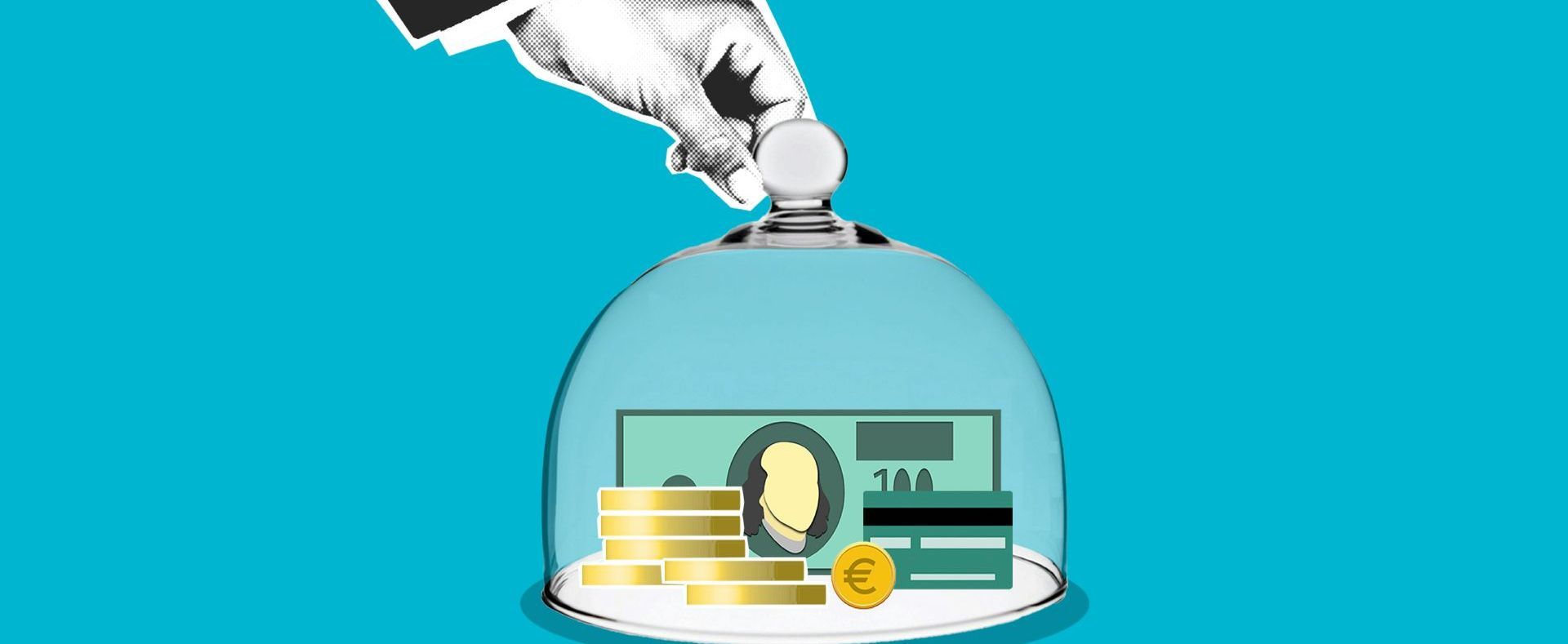
Essential Peer-to-Peer Lending Terms Explained

Peer-to-peer lending is a financial concept that has gained significant attention in recent years, and understanding the key peer to peer lending terms is crucial for both lenders and borrowers. A comprehensive p2p lending glossary can help individuals navigate the complex world of peer-to-peer lending, making informed decisions about their financial investments. In this article, we will delve into the world of peer-to-peer lending, exploring the essential terms and concepts that are necessary for a thorough understanding of this financial phenomenon.
The importance of grasping peer to peer lending terms cannot be overstated, as it enables lenders and borrowers to make informed decisions about their financial investments. A solid understanding of p2p lending glossary terms can help individuals avoid common pitfalls and maximize their returns. Whether you are a seasoned investor or a newcomer to the world of peer-to-peer lending, having a firm grasp of the essential terms and concepts is vital for success.
Introduction to Peer-to-Peer Lending
In the realm of finance, peer-to-peer lending has emerged as a popular alternative to traditional banking methods. By understanding the key peer to peer lending terms and concepts, individuals can unlock the full potential of this innovative financial approach. With a comprehensive p2p lending glossary at your disposal, you can navigate the complex world of peer-to-peer lending with confidence.
Key Takeaways
- Understanding peer to peer lending terms is essential for making informed financial decisions
- A comprehensive p2p lending glossary can help individuals navigate the complex world of peer-to-peer lending
- Grasping key terms and concepts can help lenders and borrowers avoid common pitfalls and maximize their returns
- Peer-to-peer lending has emerged as a popular alternative to traditional banking methods
- A solid understanding of p2p lending glossary terms is vital for success in the world of peer-to-peer lending
- Having a firm grasp of essential terms and concepts can help individuals unlock the full potential of peer-to-peer lending
What is Peer-to-Peer Lending?
Peer-to-peer lending is a financial transaction where individuals lend and borrow money without the involvement of traditional financial institutions. This type of lending has become increasingly popular, with many online platforms emerging to facilitate these transactions. Understanding peer lending jargon and peer to peer lending vocabulary is essential to navigate this market.
To get started, borrowers and lenders must register on a peer-to-peer lending platform. The platform then connects them, allowing lenders to provide funds to borrowers in exchange for interest payments. The role of online platforms in peer-to-peer lending is crucial, as they provide a secure and efficient way to facilitate these transactions.
How it Works
The process of peer-to-peer lending involves several steps. First, borrowers apply for a loan on the platform, providing personal and financial information. The platform then assesses the borrower's creditworthiness and assigns an interest rate. Lenders can browse the platform's listings and choose which loans to fund, either in whole or in part.
The Role of Online Platforms
Online platforms play a vital role in peer-to-peer lending, as they provide a marketplace for borrowers and lenders to connect. These platforms typically offer services such as credit checking, loan servicing, and payment processing. By using peer to peer lending vocabulary and understanding peer lending jargon, lenders and borrowers can make informed decisions and navigate the platform effectively.
Some key benefits of using online platforms for peer-to-peer lending include convenience, flexibility, and accessibility. These platforms provide an opportunity for individuals to lend and borrow money outside of traditional banking channels, making it easier for people to access credit and earn interest on their investments.
Key Terminology in P2P Lending
To navigate the world of peer-to-peer lending, it's essential to understand the key terminology used in this industry. P2P lending terminology can seem complex, but once you grasp the basics, you'll be better equipped to make informed decisions. In this section, we'll explore the fundamental concepts that underpin P2P lending, including the roles of borrowers, lenders, and loan agreements.
Let's start with the basics. A borrower is an individual or business that seeks to borrow money through a P2P lending platform. On the other hand, a lender is an individual or institution that provides the funds for the loan. The loan agreement is the contract that outlines the terms and conditions of the loan, including the interest rate, repayment schedule, and any fees associated with the loan.
Borrower
A borrower in P2P lending is typically an individual or small business that requires funds for a specific purpose, such as consolidating debt or financing a new venture. Borrowers are usually required to provide personal and financial information to the P2P lending platform, which is then used to assess their creditworthiness.
Lender
A lender in P2P lending is an individual or institution that invests in loans issued by the platform. Lenders can choose to invest in a variety of loans, diversifying their portfolio to minimize risk. The lender earns interest on their investment, which is typically paid back over a set period.
Loan Agreement
A loan agreement in P2P lending is a legally binding contract between the borrower and the lender. The agreement outlines the terms and conditions of the loan, including the interest rate, repayment schedule, and any fees associated with the loan. It's essential for both borrowers and lenders to carefully review the loan agreement before signing, as it can have significant implications for their financial well-being.
Common Types of Peer-to-Peer Loans
Peer-to-peer lending offers a range of loan options to cater to different needs and circumstances. Understanding the various types of loans available is essential for both borrowers and lenders. In the context of peer to peer lending terms, it's crucial to familiarize yourself with the p2p lending glossary to make informed decisions.
When exploring peer-to-peer lending, you'll come across personal loans, business loans, and real estate loans. Each type of loan has its unique characteristics, such as interest rates, repayment terms, and borrower requirements. For instance, personal loans can be used for various purposes, including debt consolidation, weddings, or home improvements. Business loans, on the other hand, are designed to support entrepreneurs and small business owners in expanding their operations or covering expenses.
Key Loan Types
Personal Loans: suitable for individual borrowers, offering flexible repayment terms and competitive interest rates.
Business Loans: designed for entrepreneurs and small business owners, providing access to capital for growth and development.
Real Estate Loans: catering to borrowers looking to invest in property, including mortgages and renovation loans.
By understanding the different types of peer-to-peer loans, you can make informed decisions about which loan is right for you. Whether you're a borrower or a lender, it's essential to grasp the peer to peer lending terms and p2p lending glossary to navigate the market effectively.
Understanding Interest Rates
Interest rates play a crucial role in peer lending jargon, as they determine the cost of borrowing for individuals and businesses. In the context of peer-to-peer lending, interest rates can be either fixed or variable, each with its own set of advantages and disadvantages. A fixed interest rate remains the same throughout the loan term, providing borrowers with predictable monthly payments. On the other hand, variable interest rates can fluctuate based on market conditions, potentially leading to higher or lower payments.
Fixed vs. Variable Rates
When it comes to peer lending jargon, understanding the difference between fixed and variable rates is essential. Fixed rates are often preferred by borrowers who value stability and predictability, while variable rates may be more suitable for those who can adapt to changing market conditions. For instance, a borrower with a good credit score may opt for a variable rate to take advantage of potential decreases in interest rates.
Factors Affecting Rates
Several factors can influence interest rates in peer-to-peer lending, including credit scores, loan terms, and market conditions. A borrower's credit score, for example, can significantly impact the interest rate they qualify for, with higher scores typically resulting in lower rates. Additionally, loan terms, such as the repayment period and loan amount, can also affect the interest rate. By understanding these factors and the peer lending jargon surrounding them, borrowers and lenders can make informed decisions and navigate the world of peer-to-peer lending with confidence.
Loan Terms and Conditions
When it comes to peer to peer lending, understanding the loan terms and conditions is crucial for both borrowers and lenders. This includes the repayment period, which can vary depending on the type of loan and the lender's requirements. Borrowers should carefully review the loan agreement to ensure they understand the repayment schedule and any fees associated with late payments.
In peer to peer lending, fees and charges can add up quickly, so it's essential to factor these into the overall cost of the loan. Origination fees, servicing fees, and late payment fees are just a few examples of the charges that may be incurred. By understanding these fees and charges, borrowers can make informed decisions about their loan options and avoid potential pitfalls.
Repayment Period
The repayment period for a peer to peer loan can range from a few months to several years, depending on the loan amount and the lender's requirements. Borrowers should consider their financial situation and ensure they can afford the monthly payments before agreeing to a loan. A longer repayment period may result in lower monthly payments, but it can also mean paying more in interest over the life of the loan.
Fees and Charges
Origination fees: These fees are charged by the lender for processing the loan application and are typically deducted from the loan amount.
Servicing fees: These fees are charged by the lender for managing the loan and may be deducted from the loan payments.
Late payment fees: These fees are charged when a borrower misses a payment or pays late, and can add up quickly.
By carefully reviewing the loan terms and conditions, borrowers can ensure they understand the repayment period and any fees associated with the loan. This can help them make informed decisions and avoid potential pitfalls in the peer to peer lending process.
The Importance of Credit Scores
In the realm of p2p lending terminology, credit scores play a vital role in determining the fate of loan applications. A good credit score can be the deciding factor in securing a loan with favorable interest rates. Lenders use credit scores to assess the creditworthiness of borrowers, and a high score can increase the chances of loan approval.
When it comes to p2p lending, credit scores are used to evaluate the risk of lending to a particular borrower. A borrower with a good credit score is considered less risky, and therefore, may be eligible for better loan terms. On the other hand, a borrower with a poor credit score may be considered high-risk and may be charged higher interest rates or may even be denied a loan.
How Credit Scores Impact Loans
Credit scores can impact loans in several ways. For instance, a borrower with a good credit score may be eligible for a lower interest rate, which can result in lower monthly payments. In contrast, a borrower with a poor credit score may be charged a higher interest rate, resulting in higher monthly payments.
Fortunately, credit scores are not set in stone, and there are several ways to improve them. Some tips for improving your credit score include:
- Making timely payments on existing loans and credit cards
- Keeping credit utilization ratios low
- Monitoring credit reports for errors
- Avoiding new credit inquiries
By following these tips and maintaining good credit habits, borrowers can improve their credit scores over time, increasing their chances of securing better loan terms in the p2p lending market.
Risks of Peer-to-Peer Lending
Peer to peer lending terms can be complex, and understanding the risks involved is crucial for both lenders and borrowers. One of the primary risks associated with peer-to-peer lending is default risk, which occurs when a borrower fails to repay their loan. This can result in significant losses for lenders, highlighting the importance of carefully evaluating borrower creditworthiness and loan terms.
Another significant risk is platform risk, which refers to the potential for the peer-to-peer lending platform itself to fail or experience technical difficulties. This can impact the ability of lenders to receive repayments and borrowers to access funds, emphasizing the need for robust platform infrastructure and contingency planning. By understanding these risks and taking steps to mitigate them, participants in peer-to-peer lending can navigate the market with greater confidence and success.
Default Risk
Assessing borrower creditworthiness
Evaluating loan terms and conditions
Diversifying loan portfolios to minimize risk
Platform Risk
To minimize platform risk, it's essential to research and select a reputable peer-to-peer lending platform with a strong track record of reliability and security. By doing so, lenders and borrowers can better navigate the peer to peer lending terms and minimize their exposure to potential risks.
Benefits of P2P Lending
Peer-to-peer lending offers numerous benefits to both borrowers and lenders, making it an attractive alternative to traditional banking products. By providing a p2p lending glossary, individuals can better understand the process and make informed decisions. One of the primary advantages of p2p lending is its accessibility for borrowers, as it often provides more flexible and attractive terms than traditional loans.
For lenders, p2p lending can offer higher returns on their investments compared to traditional savings accounts or other investment options. This is because lenders can choose to invest in loans with varying levels of risk, allowing them to potentially earn higher returns. The p2p lending glossary can help lenders navigate the process and make informed decisions about their investments.
Accessibility for Borrowers
Borrowers can benefit from p2p lending due to its accessibility and flexibility. With p2p lending, borrowers can often access loans with more favorable terms, such as lower interest rates or longer repayment periods. This can be especially beneficial for individuals who may not qualify for traditional loans or who need funds quickly.
Higher Returns for Lenders
Lenders can also benefit from p2p lending by earning higher returns on their investments. By investing in loans with varying levels of risk, lenders can potentially earn higher returns than they would with traditional investments. The p2p lending glossary can help lenders understand the risks and rewards associated with p2p lending and make informed decisions about their investments.
Overall, p2p lending offers a range of benefits for both borrowers and lenders, making it a viable alternative to traditional banking products. By understanding the p2p lending glossary and the benefits of p2p lending, individuals can make informed decisions about their financial options.
Regulatory Environment in Canada
The regulatory environment for peer-to-peer lending in Canada is overseen by several governing bodies. These bodies play a crucial role in ensuring that peer-to-peer lending platforms operate within a framework that protects consumers and maintains the integrity of the financial system. Understanding the peer lending jargon is essential for navigating this environment.
Key regulations in Canada include those related to consumer protection, securities, and anti-money laundering. The Financial Consumer Agency of Canada (FCAC) and the Canadian Securities Administrators (CSA) are among the primary governing bodies involved in regulating peer-to-peer lending. They work to ensure that platforms are transparent, fair, and compliant with all relevant laws and regulations.
Governing Bodies
- Financial Consumer Agency of Canada (FCAC)
- Canadian Securities Administrators (CSA)
- Office of the Superintendent of Financial Institutions (OSFI)
Key Regulations
Regulations focus on areas such as disclosure requirements, licensing, and operational standards. For instance, peer-to-peer lending platforms must clearly disclose loan terms, including interest rates and repayment conditions, to borrowers. This transparency is a cornerstone of the peer lending jargon, ensuring that borrowers are well-informed and protected.
By understanding and complying with these regulations, peer-to-peer lending platforms in Canada can provide a safe and reliable environment for both lenders and borrowers, facilitating the growth of the peer lending market while minimizing risks.
How to Choose a P2P Lending Platform
When it comes to peer to peer lending, selecting the right platform is crucial for both borrowers and lenders. With numerous options available, it's essential to research and evaluate each platform based on several key factors.
A good starting point is to assess the platform's reputation and reviews from existing users. This can provide valuable insights into the platform's reliability, customer service, and overall user experience. Additionally, consider the fees and services offered by the platform, as these can significantly impact the borrowing or lending process.
Key Evaluation Criteria
Interest rates and terms
Fees and charges
Repayment options and flexibility
Customer support and service
Security and regulatory compliance
By carefully evaluating these factors and considering your individual needs, you can make an informed decision when choosing a peer to peer lending platform. Remember to always prioritize transparency, security, and reliability to ensure a successful and stress-free experience in the world of peer to peer lending.
Future Trends in Peer-to-Peer Lending
As the peer-to-peer (P2P) lending industry continues to evolve, exciting technological advancements and promising market projections suggest a bright future for this innovative financial solution. Emerging technologies, such as blockchain and artificial intelligence, are poised to transform the P2P lending landscape, offering enhanced security, faster transaction processing, and more personalized services for both borrowers and lenders.
Industry experts anticipate significant growth in the P2P lending market in the coming years. With increased public awareness, regulatory clarity, and the growing appeal of alternative financing options, the P2P lending sector is expected to see a surge in both borrower and lender participation. This expansion will likely bring greater accessibility, competitive interest rates, and diversified investment opportunities for Canadians seeking to explore the p2p lending terminology and the benefits of peer-to-peer lending.
As the industry evolves, P2P lending platforms will need to stay ahead of the curve, continuously innovating their offerings and ensuring robust risk management practices. By leveraging emerging technologies and responding to the changing needs of the market, these platforms can solidify their position as reliable and trustworthy partners in the financial ecosystem. The future of peer-to-peer lending holds immense promise, and those who embrace the opportunities it presents will be well-positioned to thrive in the years ahead.
FAQ
Peer-to-peer (P2P) lending is a form of alternative financing where individuals or businesses borrow and lend money directly, without the involvement of traditional financial institutions like banks. It connects borrowers with lenders through online platforms, enabling them to bypass the traditional banking system.
How does peer-to-peer lending work?
In peer-to-peer lending, online platforms act as intermediaries, matching borrowers with lenders. Borrowers apply for loans, and lenders can invest in parts of those loans. Borrowers make regular payments, which are then distributed to the lenders, who earn interest on their investments.
What are the key terms used in peer-to-peer lending?
Some of the key terms in peer-to-peer lending include: - Borrower: An individual or business that applies for and receives a loan through a P2P platform. - Lender: An individual who invests money through a P2P platform to fund loans. - Loan Agreement: A legal contract that outlines the terms and conditions of the loan, including the interest rate, repayment schedule, and any fees or charges.
What are the common types of peer-to-peer loans?
The most common types of peer-to-peer loans are: - Personal Loans: Loans for individual borrowers, such as for debt consolidation, home improvement, or unexpected expenses. - Business Loans: Loans for small businesses and entrepreneurs to finance their operations or expansion. - Real Estate Loans: Loans for the purchase, refinancing, or investment in residential or commercial real estate.
How are interest rates determined in peer-to-peer lending?
Interest rates in peer-to-peer lending can be either fixed or variable. Factors that affect interest rates include the borrower's credit score, the loan amount, the repayment period, and market conditions. Lenders can sometimes set their own desired interest rates, which are then matched with borrowers based on their risk profile.
What are the key terms and conditions in a peer-to-peer loan?
The key terms and conditions in a peer-to-peer loan include the repayment period, which can vary from a few months to several years, and any fees or charges, such as origination fees, late payment fees, or prepayment penalties. It's important for both borrowers and lenders to carefully review the loan agreement to understand these terms.
How important are credit scores in peer-to-peer lending?
Credit scores play a crucial role in peer-to-peer lending. A borrower's credit score significantly impacts their eligibility for a loan, as well as the interest rate they are offered. Lenders often use credit scores to assess the risk of a borrower defaulting on the loan. Improving your credit score can increase your chances of getting approved for a loan and securing better terms.
What are the risks associated with peer-to-peer lending?
The main risks in peer-to-peer lending include: - Default Risk: The risk that a borrower will fail to make their loan payments, leading to losses for the lender. - Platform Risk: The risk that the P2P platform itself may experience technical issues, financial difficulties, or regulatory problems, which could impact the lending process.
What are the benefits of peer-to-peer lending?
The key benefits of peer-to-peer lending include: - Accessibility for Borrowers: P2P lending can provide access to financing for individuals and businesses who may not qualify for traditional bank loans. - Higher Returns for Lenders: Lenders in peer-to-peer platforms can potentially earn higher returns on their investments compared to traditional savings accounts or other fixed-income products.
How is peer-to-peer lending regulated in Canada?
In Canada, peer-to-peer lending platforms are regulated by the provincial securities commissions, such as the Ontario Securities Commission. Key regulations include requirements for platform registration, disclosure of risks, and investor protection measures. The regulatory environment aims to ensure the safety and integrity of the peer-to-peer lending market.
How can I choose a reliable peer-to-peer lending platform?
When choosing a peer-to-peer lending platform, it's important to consider factors such as the platform's reputation, reviews from users, the fees and services offered, and the platform's compliance with regulatory requirements. Thoroughly researching and comparing different platforms can help you make an informed decision as a borrower or lender.
What are the future trends in peer-to-peer lending?
Some of the key trends in the future of peer-to-peer lending include: - Technological Advancements: Emerging technologies, such as blockchain and artificial intelligence, are expected to enhance the efficiency, security, and accessibility of peer-to-peer lending platforms. - Market Growth Projections: The peer-to-peer lending market is projected to continue growing, driven by the increasing demand for alternative financing options and the potential for higher returns for lenders.


*Disclaimer: Brand Street Agency is authorized to use goPeer's trademarks and branding solely for marketing purposes related to goPeer’s loan products with prior written consent from goPeer. goPeer Corporation and its affiliates are not responsible for any content, statements, or representations made by Brand Street Agency on this website. Loan approvals are not guaranteed and are subject to goPeer's underwriting policies. Terms and conditions apply. For the most accurate and up-to-date information regarding goPeer’s loan products, please visit goPeer's official website (https://gopeer.ca). Brand Street Agency operates as an independent entity and is not an employee, representative, or affiliate of goPeer Corporation or its affiliates. Brand Street Agency may receive compensation for its services.
goPeer offers unsecured personal amortizing loans throughout Canada in amounts from $1,000 to $35,000 with terms of 3 or 5 years and Annual Percentage Rates (APR) between 8.99% and 34.99%, depending on an assessment of the borrower’s credit profile, financial position, and ability to service the loan. If a payment is unsuccessful, goPeer may charge an unsuccessful payment fee of $50. If a payment is late 30 or more days, goPeer may charge a late payment fee of $25 or 5% of the payment due, whichever is greater. goPeer charges an origination fee included in the advertised APR. There are no other fees on loans. Loans are subject to credit and underwriting approval and lending rules may vary by province. For example, the average borrowing cost paid on a $9,400 unsecured personal loan at an APR of 18.8%, with a 5-year term and bi-weekly payments of $104.80 is $4,794.49.













